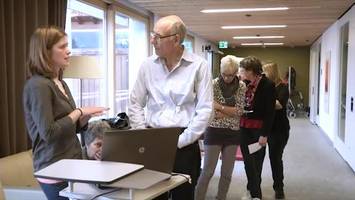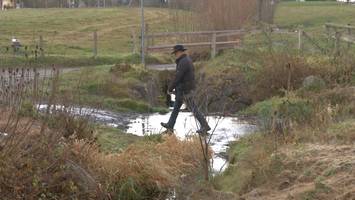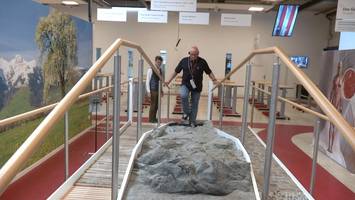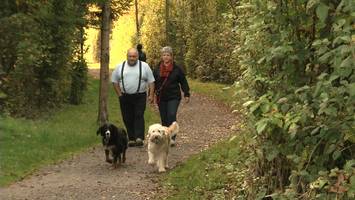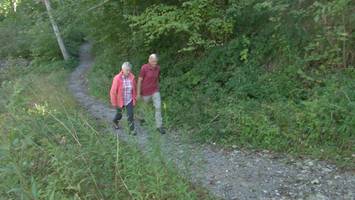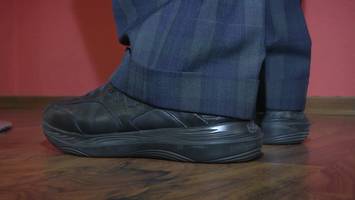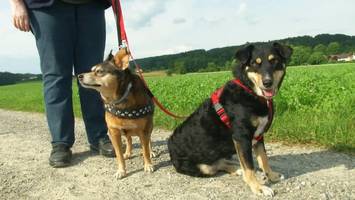Are insoles (arch supports, orthopaedic insole) recommended in the kybun shoe?
We are frequently asked this question, and it shows us that many people wear insoles in their ‘normal’ shoes.
We cannot provide a general answer to this question because there are different kinds of insoles and various reasons for wearing them. We explain below when an insole can be worn with the kybun shoe and when we advise against it.
In general, we recommend wearing the kybun shoe without insoles in most cases. The elastic springy kybun sole conforms pleasantly to any foot shape; the foot is comfortably supported and can still move freely. Because insoles require a hard, stable foundation, they do not function optimally on the elastic springy kybun sole.
The natural foot rollover on the elastic springy kybun sole strengthens the foot muscles and stabilises the entire foot. In the kybun shoe, the foot learns to actively stabilise itself with its own musculature (insoles stabilise passively); with time, many kybun users no longer need insoles at all.
Definition
An insole serves a medical purpose. It is made by an orthopaedic shoemaker or orthopaedic technician individually for each different foot shape.
Insoles are usually made for the following foot malpositions: splayfoot, flatfoot, high arch foot and drop foot. Depending on foot shape, a particular insole is used to achieve the desired goal. Insoles vary widely in material, design and length. The use of insoles generally falls into the following categories:
- Sensomotoric insoles or proprioceptive therapy (active therapy approach).
The tone regulation of the musculature used in sensomotoric/proprioceptive therapy is used to improve the individual static or axial malposition. - Conservative therapy (for passive support), such as:
Insole for flat valgus foot
Splayfoot truss pads and bandaging (front-foot insole)
Silicon wedge insole/heel pad with heel spur
Thin insoles from shoe store (comfort)
Neurological insoles: Compensate neurological deficits
Causes
Flat valgus foot
Flat valgus foot is normal in children. Toddlers only lose their flat valgus foot through growth, development and the training of the foot musculature that goes with it. Improper shoes, insufficient exercise for the feet (in an office, for instance) and frequent standing can lead to a deterioration or weakening of the foot musculature in later life. The natural arching of a healthy foot is reduced in order to continue to distribute body weight across the entire foot. The arch collapses, essentially, and soft tissue such as the tendons and muscles become overextended. More information can be found under ‘Foot malpositions’.
Splayfoot
Splayfoot is usually caused by wearing unsuitable shoes, especially heeled shoes. Wearing high-heeled pumps increases front-foot load by a factor of five. Connective tissue weakness (especially among women, who have a genetic predisposition) is another reason for increased width of the front of the foot. The padding on the sole of the foot can decline with age so that load is placed on the second, third and fourth metatarsal heads. More information can be found under ‘Foot malpositions’ and ‘Metatarsalgia’.
Flatfoot
In most cases, acquired flatfoot arises due to the insufficient functioning of muscles and ligaments. Possible causes include insufficient training (constant sitting and wearing of shoes), overtaxing of the feet due to excessive weight or standing for long periods, connective tissue weakness, heel bone fracture (‘post-traumatic flatfoot’) and diseases such as poliomyelitis, rickets and neurological and rheumatic disorders. More information can be found under ‘Foot malpositions’.
High arch foot
High arch foot is generally congenital, hereditary. It can also be caused by paralysis, Friedrich’s ataxia and damage to foot muscle nerves. A weakness in the foot musculature and ligaments can also be a cause. High arch foot can sometimes be a first sign of muscle weakness or muscle disease such as Charcot-Marie-Tooth disease.
Drop foot
This disorder has a range of possible causes and can be congenital or acquired. It can permanently shorten the Achilles tendon, making normal walking impossible. The sufferer is forced to walk ‘on tiptoes’. Sufferers are, for example:
- Invalids, particularly wearers of Thomas splints, who are generally children who have Legg-Calvé-Perthes disease.
- Drop foot can also be a part of a club foot deformity.
- The cause of so-called spastic drop foot is constantly increased tone (or cramping) of the calf musculature: The muscles responsible for, among other things, plantar flexion – musculus gastrocnemius and musculus soleus – fix the foot in the drop foot position. In this case, the deformity is caused by a neurological disorder associated with spasticity (such as infantile cerebral palsy). A further neurological cause may be flaccid paralysis of the extensor muscles of the lower leg (peroneal paralysis), which means that the foot cannot be raised during walking.
Heel spur
Heel spur arises from a lower leg and foot malformation, but also as a result of excessive weight, taking part in inappropriate types of sport and wearing unsuitable footwear. The excessive stretching of the plantar fascia leads to microtraumas at the insertional attachments of the aponeurosis or the Achilles tendon on the calcaneus. A chronic inflammation arises at that point and it is this inflammation that ultimately encourages the formation of the bony spur. More information can be found under ‘Heel spur’.
Long-term consequences
Can I wear insoles in kybun shoes?
As already described, we recommend wearing the kybun shoes without insoles in order to optimally achieve the effectiveness of the elastic springy material. Of course you are free to decide whether or not to wear the insoles in our shoes. All models with the weaker trampoline effect (see here) have a removable insole. This means that with these models you certainly have enough space for the insoles. On all other models (stronger trampoline effect) you insole is fixed. Depending on the type and thickness of the inlay, the lack of space could prevent the inlay from being used.
Which insole makes sense for the kybun shoe?
- Insoles/braces (such as a peroneal brace) that are custom-built for neurological disorders. However, using additional insoles with the kybun shoe usually entails the problem that the heel slides up in the back. This is why you should test various kybun models, but especially high-cut ones, with your insole/brace. If your insole does not fit inside the kybun shoe or is uncomfortable, we recommend the kybun mat, on which you can stand barefoot, without insoles/braces.
- Splayfoot truss pads or stiff, thin insole (from a shoe store): These can be used in the beginning to provide some support for the front-foot transverse arch in the kybun shoe until the foot musculature is strong enough and the foot/arch can stabilise itself.
- The passive and the sensomotoric insoles cannot achieve their purpose because the kybun shoe has an elastic springy sole. Insoles need a hard foundation.
- Even if we do not recommend insoles, there is nothing to prevent you from trying out all the different variants and choosing the one that feels best for you. Even if you put an insole in the kybun shoe, you will still be training your foot musculature and thereby be actively doing something to counteract the foot weakness and the resulting foot malposition.
If you experience initial reactions when you first start wearing the kybun shoe, we recommend alternating between wearing the kybun shoe without insoles and standard shoes with your usual insoles. You should be continuously extending the periods of time you wear the kybun shoe as long as your body does not protest.
After six months at the latest, eight out of ten customers no longer need insoles in their kybun shoes or their standard shoes.
The kybun principle of operation – being proactive
We recommend both the kybun mat and the kybun shoe for users with clubfoot, splayfoot or any other acquired foot malpositions (those that result from weak foot musculature). Even if you wear insoles in your original shoes, switching to the kybun shoe without insoles usually doesn’t present any problems.
Standing directly on a soft, elastic surface trains the core foot musculature and improves foot mobility. This core stabilising foot musculature is often severely weakened in case of foot problems. As a result, the foot is no longer stabilised properly. This can lead to pain and even more severe malpositions over time.
With the kybun shoe or the kybun mat, the foot can again move freely in all directions, much like walking barefoot on a soft surface. The intensive training restores stability to users with splayfoot, clubfoot or flat foot. It has been proven that insufficient or low arches can be stabilised through muscle training, thereby alleviating complaints. Active foot muscle training is the only way to strengthen the feet, prevent foot malpositions and relieve the joints higher up (such as the knee) in the long term.
The more often the foot musculature is trained, the faster the foot position improves and symptoms such as pain are reduced. In the kybun shoe or on the kybun mat, you can integrate the training into your everyday life without spending extra time and thereby challenge your foot musculature continuously over the course of the day.
Initial reactions
Specific initial reactions following years of wearing insoles and an acquired foot malposition:
In the beginning, users with club foot or flatfoot may find that their feet tip slightly to the inside or that club feet cannot be held upright in the kybun shoe or on the kybun mat. This can lead to foot pain or, often, to knee pain. Please read the ‘Application tips’ and ‘Exercises’, which will help you to avoid these initial reactions.
Users with splayfoot may experience pain in the front of the foot in the beginning when they are still unaccustomed to the kybun shoe or mat. This initial reaction will disappear as soon as your foot musculature has been strengthened in this area. Please read the ‘Application tips’ and ‘Exercises’ to avoid such foot pain.
Those suffering foot weakness that is neurological in nature (such as those with peroneal braces) may find the kybun shoe to be too unstable at first or generally, and that the foot malposition or even the danger of falling is exacerbated. Take your time when testing the various kybun shoe models and the kybun mat thicknesses (the greater the thickness, the lower the stability).
Click here for the general initial reactions experienced by kybun mat and shoe beginners: Initial reactions
kybun exercises
Application tips
For active stabilisation training of the foot, we advise wearing the kybun shoe without orthopaedic insoles (see exceptions above). The foot musculature needs several months of regular training before it is strong enough to stabilise the foot for hours in the kybun shoe. Until then, you can wear normal shoes with insoles for relief. After years of using insoles, wearing the kybun shoe constantly in the beginning (the first few weeks/months) may be too much for the feet.
Insoles provide passive support for the feet but do not improve the foot situation over the long term in any way. We recommend against constantly wearing orthopaedic insoles. It is best to listen to your body, since it tells you what is good for it and when it needs a break.
Pay attention to putting an even load on the sole in the kybun shoe and ensure that the foot stands upright on the sole. This gives you a favourable leg axis and also prevents the feet and knees from ‘rolling in’ as much.
Avoid making your steps too long; this makes it easier to maintain a good foot position in the kybun shoe. This reduces rolling to the inside.
Some people can feel too unstable in the kybun shoe. In this case, we advise you to try various kybun shoe models; some models with a higher cut provide more stability. We also recommend that these customers try the kybun shoe models with a lower Rebound-Effect (Tropo or Cirrus soles). It is a bit wider in the midfoot area, therefore making you feel more stable while walking (ask for advice in a kybun specialised shop).
If you still feel insecure walking in the kybun shoe, we advise using the kybun mat. The kybun mat is available in three different thicknesses. This allows you to choose the thickness that is most comfortable for you (the thicker, the more unstable and the more intensive the training).
You can also hold on to a fixed object if you need additional support when using the kybun mat.
With splayfoot, it is important to train the core foot musculature and promote foot mobility.
If you experience pain in the kybun shoe in the beginning, we recommend that you insert a small cushion or a fairly stiff insole (available at a chemist’s) under the arch. This supports the transverse arch and prevents hyperextension (pain). As soon as the foot musculature becomes stronger (through training in the kybun shoe or mat), the transverse arch will be actively stabilised and you will be able to remove the cushion or stiff insole.
Opinions/customer testimonials
No other shoe like this! My job requires me to work on my feet all day. Two years ago my metatarsal arch dropped. The pain was unbearable at first but with orthotics I was able to work and have worn them ever since. Now the pain is back and the orthotic is bothering me…my physiotherapist believes my foot muscles have become weak (probably from the orthotic) and indeed, when I'm able to exercise the foot, the pain relief is very apparent. In the meantime I need a soft soled shoe to keep me on my feet. The kybun shoes are not only the softest shoes I've ever worn, but they will help strengthen my feet as well! How perfect is that? I have worked my current job for 32 years and am eligible for early retirement in a few more years, but I didn't think I'd be able to make it. I had actually started looking for another line of work, and preparing to give up all the seniority and benefits I currently enjoy (including early retirement!). Now I won't have to do that. I'm so glad I found these shoes, they are amazing, like nothing else I've ever worn! And I just have to add, after wearing the shoes for the last two weeks at work. My feet actually feel better after five days of work, than they do after my two days off without them!
I can't wait until I can afford to buy another pair for wearing around the house, can't live without them now
Working as a sports doctor for the Canadian bob team gave me the chance to test out the kybun shoe in everyday use and during light sports activities. I was very impressed by the kybun shoe concept. Walking is very pleasant, and above all it very much activates the body. You can feel that the sole is a very good shock absorber and moves in all directions, but it never feels unstable or unpleasant. I myself suffer from foot problems, as I have very high arches, with the ball of the foot often having to bear a very heavy load. The shoe suited my foot shape and needs from the very start, and I have been able to wear shoes without insoles for the first time in many years.

